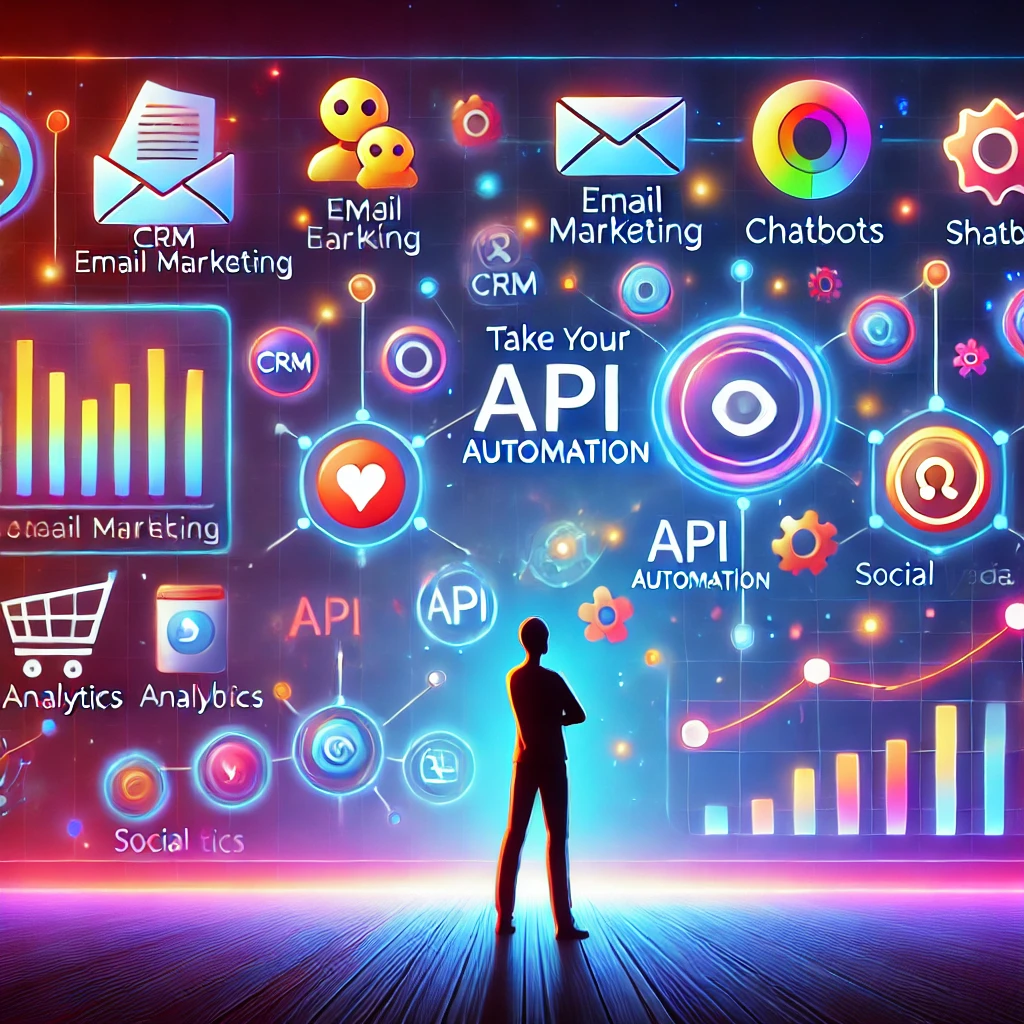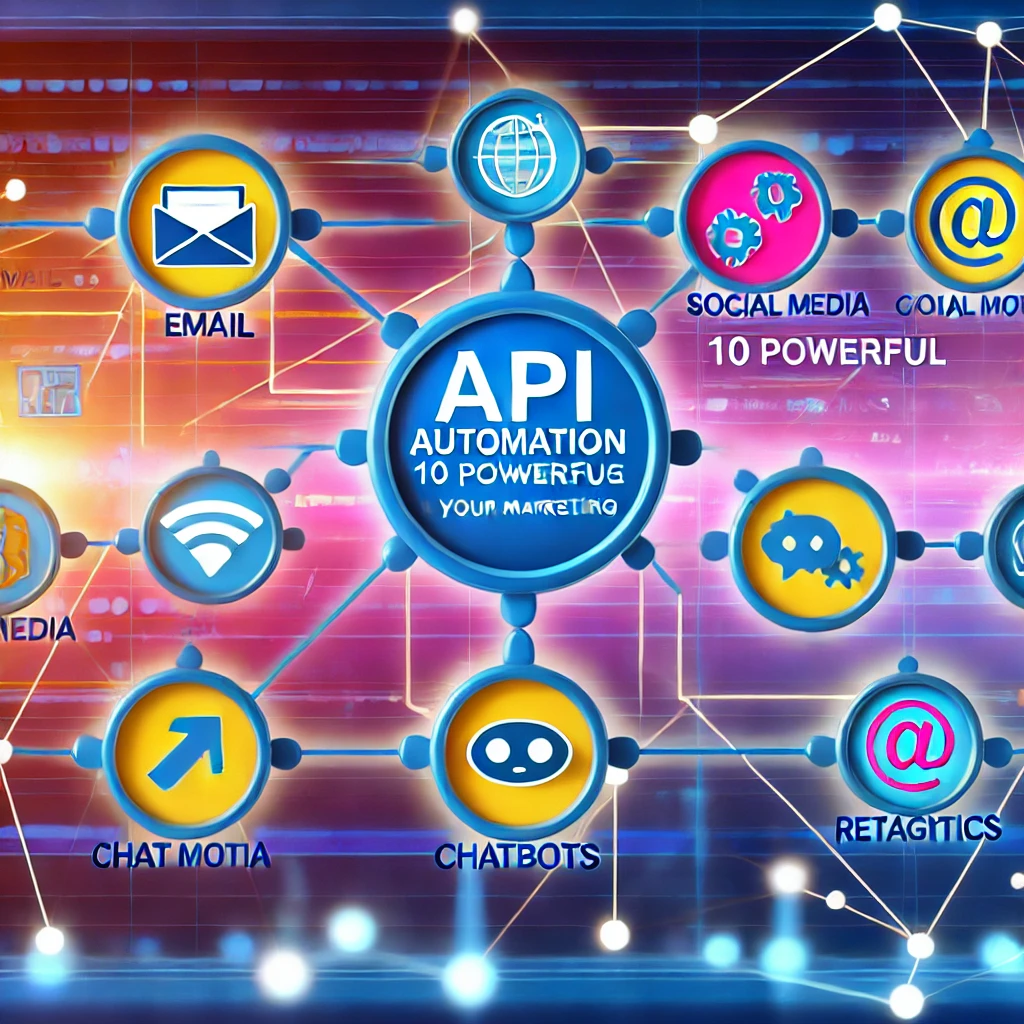API-automation is a based marketing automation is changing the game for businesses looking to scale their marketing efforts and improve efficiency. By integrating APIs into your marketing strategy, you can streamline repetitive tasks, enhance personalization, and gather better insights—all while freeing up time to focus on creative and strategic initiatives. In this post, we’ll dive deep into the world of API marketing integration, uncovering how it can revolutionize your campaigns and deliver impressive results.
The API Advantage: Why Automation Is the Future of Marketing
With the rise of digital transformation, marketers are faced with the challenge of managing multiple channels, platforms, and data sources. API automation provides a solution to these complexities, making it possible to connect tools, share data, and automate tasks without constant human intervention. The benefits of API marketing integration are far-reaching:
- Efficiency and time savings: Automating routine tasks such as email scheduling, lead scoring, and customer segmentation frees up time for your team to focus on high-impact activities.
- Improved data flow: APIs allow seamless communication between different software systems, ensuring data consistency across all marketing channels.
- Personalization at scale: API integrations enable you to pull real-time customer data to tailor messaging and offers, improving engagement and conversion rates.
APIs aren’t just a nice-to-have in today’s marketing landscape—they’re essential. The next sections will explore practical ways you can harness API automation to supercharge your marketing campaigns.
For more insights into leveraging automation to enhance your sales strategy, check out our in-depth blog, “5 Powerful Sales Process Automation Ideas to Drive Success with API Integrations.This blog explores practical ideas on how API integrations can streamline your sales processes, boost efficiency, and drive impactful results. Dive into the full article here to discover how automation can transform your sales approach and support your business success.
Table of Contents
1. Automate Email Campaigns for Better Targeting and Timing
Email marketing remains one of the most powerful tools in a marketer’s toolkit. However, manually managing email lists, segments, and scheduling can be overwhelming. API integration takes email automation to the next level by synchronizing your CRM, customer data platforms (CDP), and email marketing tools.
With API automation, you can set up workflows that trigger personalized emails based on user actions or milestones. For example, when a customer abandons their cart, APIs can instantly send a reminder email to encourage them to complete the purchase. By using APIs to tap into real-time data, you can ensure your emails are always relevant and timely.
Pro tip: Use APIs to integrate your email marketing platform with analytics tools like Google Analytics. This integration allows you to measure the effectiveness of your campaigns and refine your messaging based on real-time performance data.
2. Boost Lead Generation with Real-Time Data Enrichment
Lead generation is the lifeblood of any marketing campaign, but gathering accurate and complete data can be a challenge. API integrations allow you to enrich your leads in real time by pulling data from external sources, such as social media profiles, CRM systems, or third-party databases.
By automatically appending valuable information—such as job titles, industry, and company size—to your leads, you can create more personalized and targeted campaigns. This enhanced data helps your sales team prioritize high-quality leads, making your marketing efforts more effective.
External link: Learn how real-time lead enrichment through API automation can boost conversion rates here.
3. Personalize Customer Experiences Across Multiple Channels
Personalization is a key driver of customer satisfaction and loyalty. However, achieving true personalization across multiple marketing channels—like email, social media, and your website—can be difficult without the right tools. API automation solves this problem by enabling seamless communication between platforms, allowing you to deliver consistent, personalized experiences.
For example, by using an API to connect your social media platform to your CRM, you can automatically segment audiences based on their behavior and preferences. Then, you can serve targeted ads or content to specific user segments, creating a more relevant and engaging experience.
4. Streamline Social Media Scheduling and Management
Managing multiple social media accounts can be a time-consuming task, especially if you’re posting manually or using separate tools for each platform. API integration allows you to automate social media scheduling, ensuring your posts go out at the optimal time, every time.
Tools like Hootsuite or Buffer leverage APIs to connect with platforms like Facebook, Instagram, Twitter, and LinkedIn. This integration means you can manage all your accounts from a single dashboard, streamlining the process of publishing, monitoring, and analyzing your social media efforts.
Pro tip: Use API-powered analytics to monitor social media performance in real-time. This data can help you adjust your strategy quickly, maximizing engagement and reach.
5. Enhance Customer Support with Chatbots and AI Integration
Customer support is an integral part of any marketing strategy, but scaling it can be difficult. API-based automation allows you to integrate chatbots and AI-powered assistants into your customer support channels. These bots can answer frequently asked questions, provide recommendations, or even troubleshoot issues—all without human intervention.
By automating support tasks, you can reduce response times and improve customer satisfaction. Additionally, the data collected through API-enabled bots can be analyzed to identify common pain points, allowing you to improve your products or services.
External link: Read more about the benefits of API chatbots in customer service here.
6. Centralize Marketing Analytics for Smarter Decision-Making
Data is the foundation of any successful marketing campaign. However, when data is scattered across multiple platforms, it’s hard to get a clear picture of what’s working and what isn’t. API integrations can solve this by pulling data from various tools—like Google Analytics, CRM systems, email platforms, and social media dashboards—and centralizing it in one place.
With a unified view of your data, you can gain actionable insights into customer behavior, campaign performance, and ROI. This centralized analytics approach makes it easier to identify trends and opportunities, enabling you to make smarter, data-driven decisions.
7. Power Up Your Advertising with API-Driven Retargeting
Retargeting is a proven strategy for converting website visitors into customers, but managing retargeting campaigns manually can be time-consuming and inefficient. API automation allows you to dynamically retarget visitors based on their actions in real time.
For example, you can use APIs to connect your e-commerce platform with your ad network (such as Google Ads or Facebook Ads) and automatically serve ads to users who viewed specific products but didn’t make a purchase. By using real-time data, your ads will be more relevant, increasing the likelihood of conversion.
8. Improve Customer Segmentation with Predictive Analytics
API automation isn’t just about automating tasks—it’s also about improving the quality of your marketing efforts through data-driven insights. By integrating APIs with predictive analytics tools, you can enhance customer segmentation, enabling you to deliver more personalized and effective marketing messages.
For example, APIs can connect your CRM to a predictive analytics platform that analyzes historical customer data and predicts future behavior. You can then use this information to tailor your marketing campaigns to different customer segments, increasing the likelihood of engagement and conversion.
9. Scale Content Marketing with Automated Content Curation
Content marketing is a crucial component of any modern marketing strategy, but creating and curating content at scale can be a daunting task. API-based content automation tools can help by sourcing, organizing, and publishing content automatically.
For instance, you can use APIs to pull relevant articles, videos, or social media posts from across the web and curate them for your audience. This not only saves time but also ensures that your content is always fresh, relevant, and engaging.
Pro tip: Leverage APIs to integrate your content curation tool with your social media platforms, allowing for seamless distribution of curated content.
10. Integrate CRM and Marketing Platforms for Full-Funnel Automation
The best marketing strategies are those that align sales and marketing efforts. API integration between your CRM and marketing platforms ensures that data flows seamlessly between the two, enabling full-funnel automation.
For example, when a lead engages with your marketing campaign, APIs can automatically update their status in the CRM and trigger the appropriate follow-up actions—whether that’s a targeted email, a phone call from sales, or an invitation to a webinar. This level of automation ensures that no opportunity falls through the cracks, improving lead nurturing and driving conversions.
Final Thoughts: Take Your Marketing to the Next Level with API Automation
API automation is transforming the way businesses approach marketing. By integrating your tools and platforms through APIs, you can streamline processes, improve personalization, and gather better insights—all while saving time and resources. Whether you’re looking to boost lead generation, enhance customer experiences, or optimize your advertising efforts, API-based marketing automation is the key to unlocking the full potential of your campaigns.

Now is the time to explore how API automation can fit into your marketing strategy. The future of marketing is automated, data-driven, and powered by APIs.

